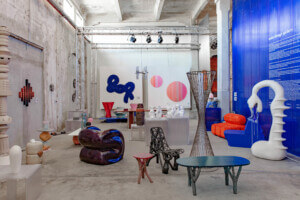Just several short weeks after Carlo Ratti Associati first unveiled the prototype for a plug-in biocontainment pod fashioned out of a shipping container, the first working unit has been deployed to a makeshift emergency center in Turin, Italy, where it is now fully operational. The Piedmont region is among the areas of Italy hardest hit by the novel coronavirus (COVID-19), and hospitals in the capital of Turin and in other northern cities have struggled to accommodate an influx of gravely ill patients.
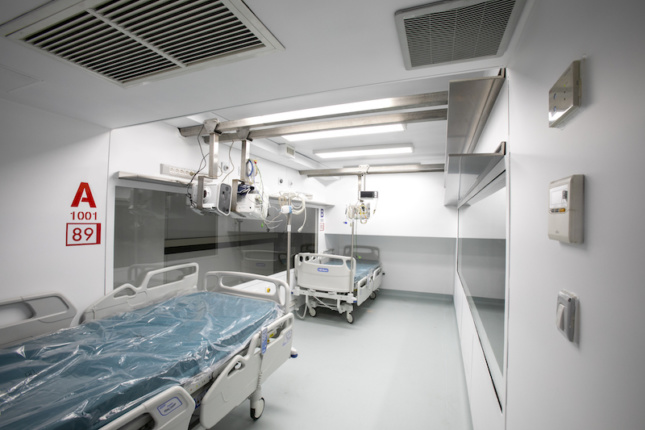
Dubbed CURA (short for “Connected Units for Respiratory Ailments”), the open-source design was conceived by visionary architect, inventor, and educator Ratti—a Turin native who also founded his namesake design firm in the city—and colleague Italo Rota in collaboration with a lengthy list of partners, many of them specializing in medical equipment, engineering, and healthcare logistics and design. They include Humanitas Research Hospital in Milan, engineering firm Jacobs, the MIT Senseable City Lab, British construction management firm Projema, Dutch electronics giant Philips, and Turin-based medical consultant Dr. Maurizio Lanfranco to name just a few.
Packed with the requisite equipment (beds, respirators, monitors, and on), the swift-to-deploy CURA pods are meant to ease pressure on overwhelmed hospitals and, thanks to the presence of top-flight biocontainment equipment, offer the same safe environment as standard isolation wards but in a field hospital setting. The inaugural unit was approved for use by the World Economic Forum (COVID-19 Action Platform and Cities, Infrastructure, and Urban Services Platform) and financed by the Italian bank UniCredit.
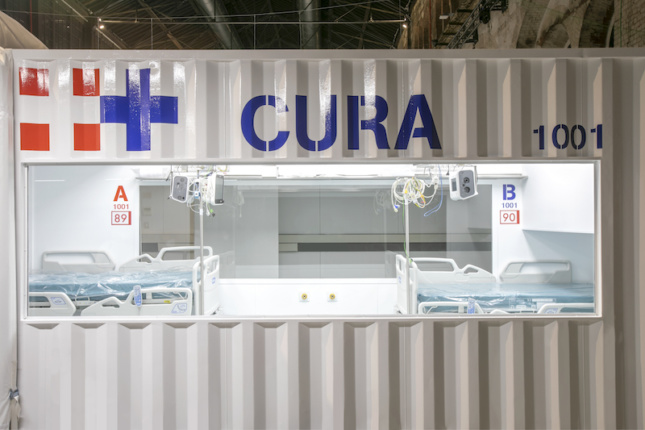
Carlo Ratti Associati elaborates on the design and function of CURA pods in a press statement:
Each unit is hosted in a 20-foot intermodal container, repurposed with biocontainment equipment. An extractor creates indoor negative pressure, complying with the standards of Airborne Infection Isolation Rooms AIIRs. Two glass windows carved on the opposite sides of the containers are meant for doctors to always get a sense of the status of patients both inside and outside the pods. Also, this would potentially allow external visitors to get closer to their relatives in a safer and more humane setting. Each pod works autonomously and can be promptly shipped to any location around the world, adapting to the needs of the local healthcare infrastructure.
As Lloyd Alter, somewhat of an expert on the subject of intermodal steel boxes, wrote last month for TreeHugger, standard shipping containers are tight—perhaps a little to tight to accommodate very fluid and sometimes chaotic emergency care activities. Initial renderings made the CURA units appear deceivingly spacious. When outfitted with beds and bulky equipment, the real pods do look to be a wee bit on the cramped side but not prohibitively so. One wonders how much room there will be to comfortably and safely navigate the pods when filled with a small handful of doctors and nurses.
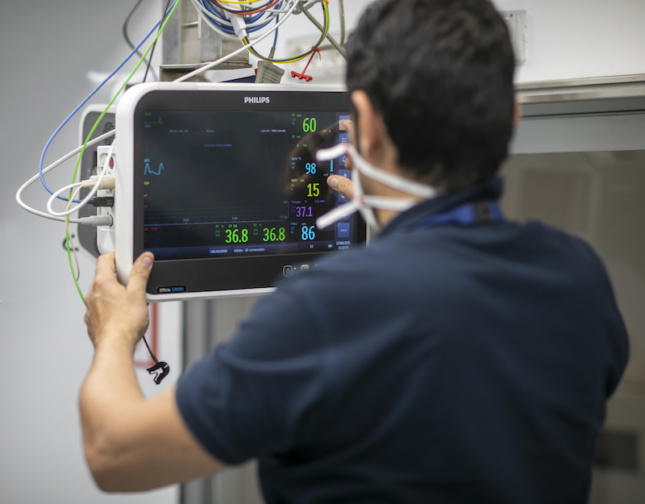
As mentioned, the first-to-deploy CURA pod has been installed at a Turin field hospital located within the historic city’s Officine Grandi Riparazioni (OGR), a late 19th-century industrial complex that was only just somewhat recently saved from decades of advanced decay and transformed into a bustling innovation and cultural hub. While a majority of coronavirus field hospitals have popped-up in gargantuan venues like convention centers and stadiums, OGR, at over 376,000 square feet, is also certainly not lacking in square footage.
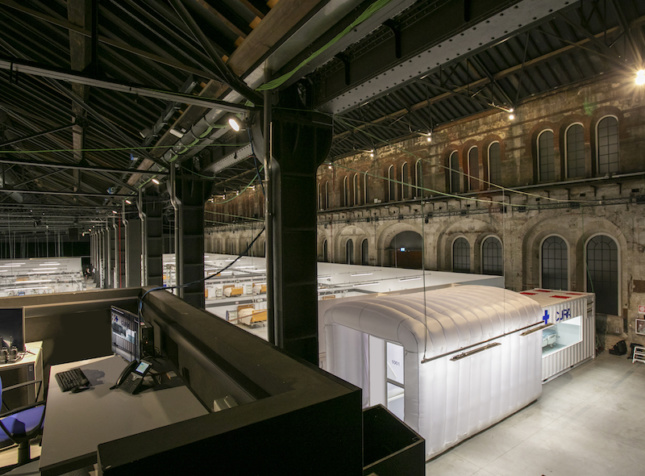
As for the temporary emergency medical facility housed at OGR, it began to take shape on April 6 as an initiative of the Genio Infrastructure of the Italian Air Force, Protezione Civile, and the Crisis Unit of the Piedmont Region. In addition to the newly installed CURA pod, the 95,000-square-foot hospital includes 92 patient beds.
Since CURA first launched in March, more than 2,000 firms and individuals have expressed interest in either collaborating on or reproducing or shipping container-turned-intensive care units per Carlo Ratti Associati. The firm notes that with the first unit now in operation, additional shipping containers are being modified to CURA specifications around the world including in Canada and the United Arab Emirates.










